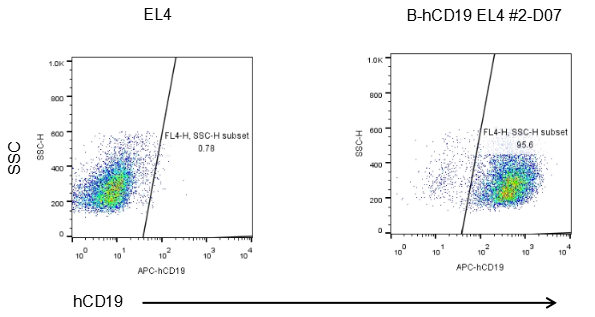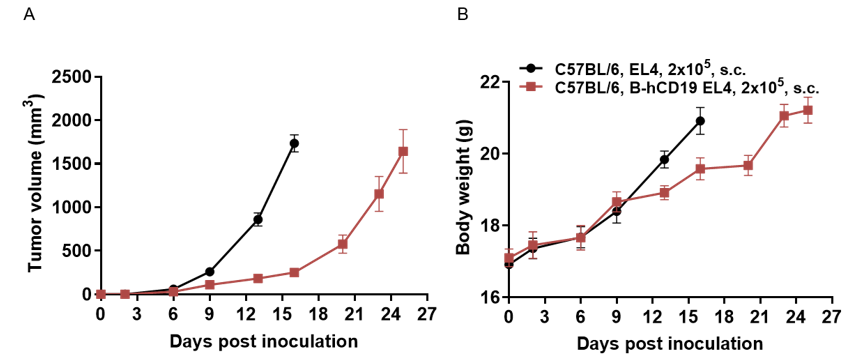|
Common name |
B-hCD19 EL4 | Catalog number | 310712 |
| Aliases | CD19, CD19 molecule, B4, CVID3 | Disease | Lymphoma |
|
Organism |
Mouse | Strain | C57BL/6N |
| Tissue types | Lymphoma | Tissue | T lymphocyte |
Description
The mouse Cd19 gene was replaced by human CD19 coding sequence in B-hCD19 EL4 cells. Human CD19 is highly expressed on the surface of B-hCD19 EL4 cells.
Application
B-hCD19 EL4 cells have the capability to establish tumors in vivo and can be used for efficacy studies.
Targeting strategy
Gene targeting strategy for B-hCD19 EL4 cells.
The exogenous promoter and human CD19 coding sequence was inserted to replace part of murine exons 2-12. The insertion disrupts the endogenous murine CD19 gene, resulting in a non-functional transcript.
Protein expression analysis

The CD19 expression analysis in B-hCD19 EL4 cells by flow cytometry. Single cells were collected from wild-type EL4 and B-hCD19 EL4 cells, and analyzed by flow cytometry with species-specific anti-CD19 antibody. Human CD19 was detectable in B-hCD19 EL4 cells but not wild-type EL4 cells. The 2-D07 clone of B-hCD19 EL4 cells was used for in vivo experiments.
Tumor growth curve & Body weight changes

Subcutaneous homograft tumor growth of B-hCD19 EL4 cells. B-hCD19 EL4 cells (2x105) and wild-type EL4 cells (2x105) were subcutaneously implanted into C57BL/6 mice (female, 5-8-week-old, n=5). Tumor volume and body weight were measured twice a week. (A) Average tumor volume ± SEM. (B) Body weight (Mean ± SEM). Volume was expressed in mm3 using the formula: V=0.5 X long diameter X short diameter2. As shown in panel A, B-hCD19 EL4 cells were able to establish tumors in vivo and can be used for efficacy studies. Animals with tumor volume over 3000mm3 in the control group were euthanized.









